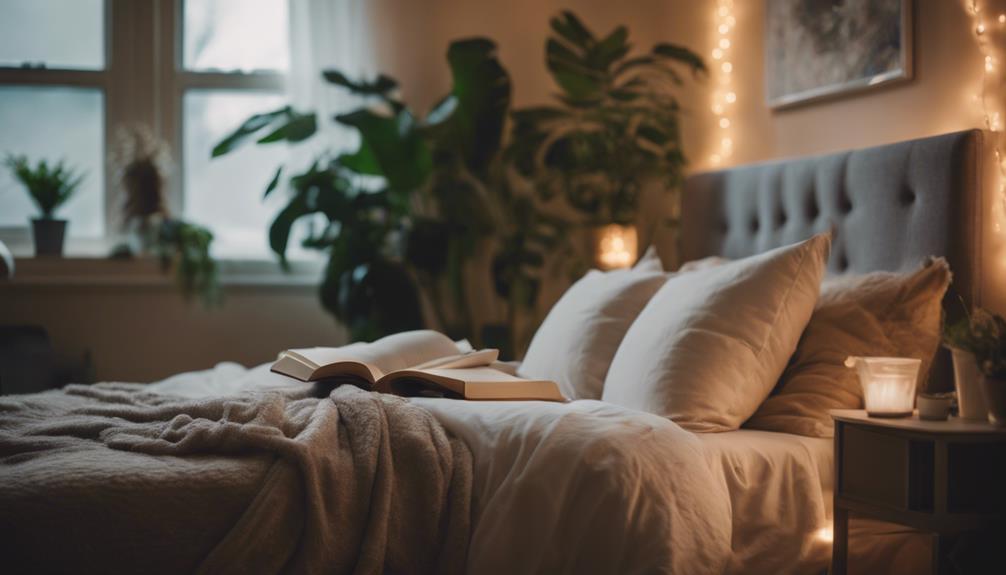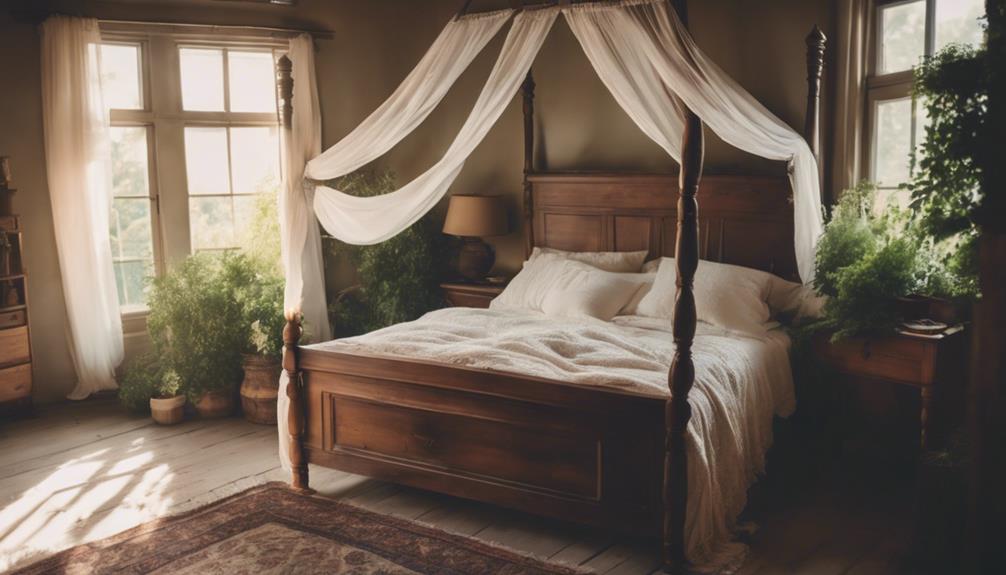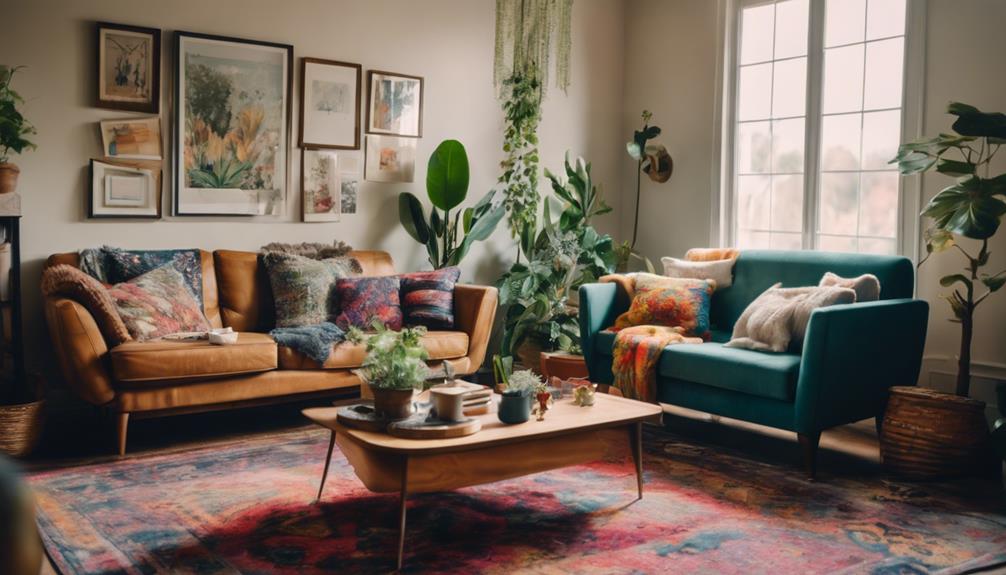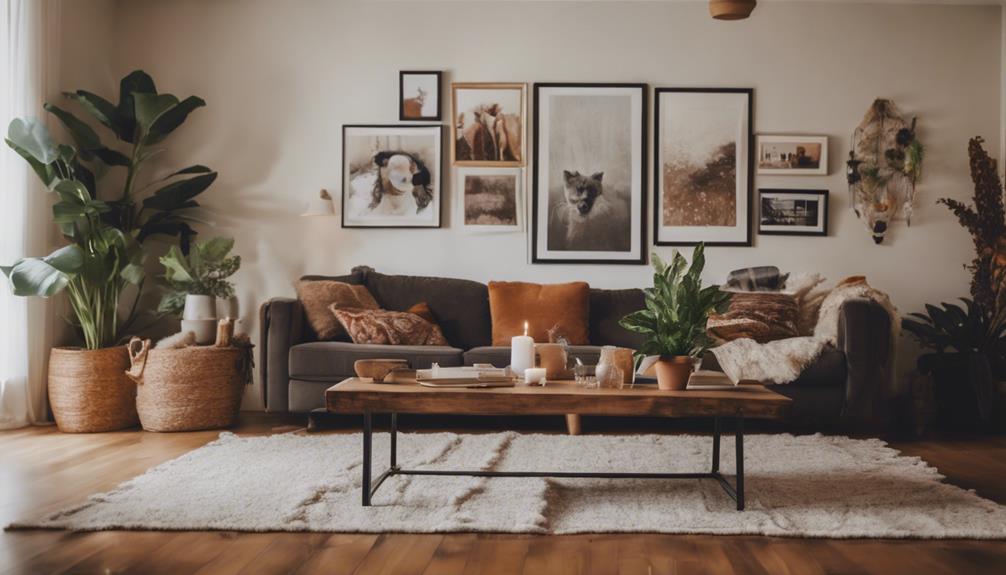You can easily turn your studio into a cozy bedroom oasis that feels both welcoming and practical. Begin by finding a secluded corner for your bed to maximize space and ensure a peaceful atmosphere. Utilize bookshelves or fabric curtains as room dividers to establish privacy and define different areas. Choose comfortable furniture with built-in storage to prevent clutter. Add warm lighting and soft fabrics to enhance the coziness. Drawing inspiration from online design communities will ignite your creativity. With a few careful decisions, you can create a space that you adore. Explore more innovative ideas to elevate your studio!
Key Takeaways
- Utilize tucked-away nooks for bed placement to maximize floor space and create a cozy sleeping area.
- Incorporate warm lighting and soft textiles to enhance the comfort and ambiance of your bedroom.
- Use bookshelves or room dividers to delineate the sleeping area from the rest of the studio for added privacy.
- Opt for snug, multifunctional furniture to maintain an open feel while ensuring a cozy atmosphere.
Studio Space Optimization
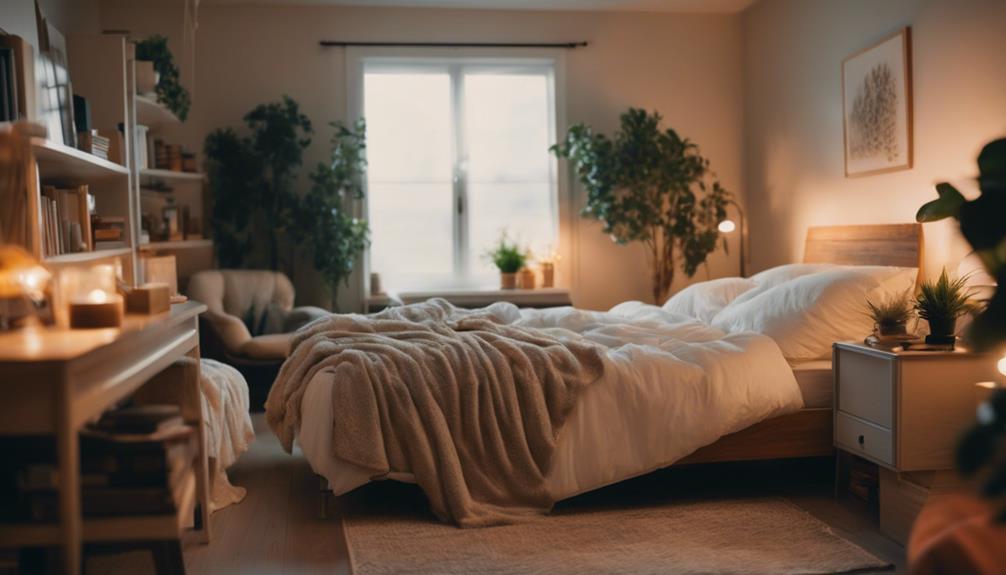
How can you make the most of your studio apartment's layout to create a cozy and functional bedroom space?
Start by evaluating your open floor plan. Identify areas that can serve multiple purposes, like using a bookshelf as a room divider. Choose furniture that fits snugly without overwhelming the space.
Opt for a bed with built-in storage to reduce clutter. Utilize vertical space with shelves to keep essentials handy.
Don't forget about lighting; warm, soft lighting can instantly enhance coziness. Incorporate textiles—think rugs and throw blankets—to add warmth and texture.
Bedroom Placement Strategies
Positioning your bed effectively within the studio can markedly enhance both functionality and comfort in your living space.
Start by identifying tucked-away nooks or corners for your sleeping area, which can help maximize floor space. If possible, place your bed away from high-traffic zones to create a more serene sleeping environment.
Use furniture, like bookshelves or dressers, to define distinct areas within the studio, ensuring your bedroom space feels like its own sanctuary.
Keep in mind the overall flow of the apartment; the bed shouldn't obstruct movement or make the area feel cramped.
Privacy Solutions
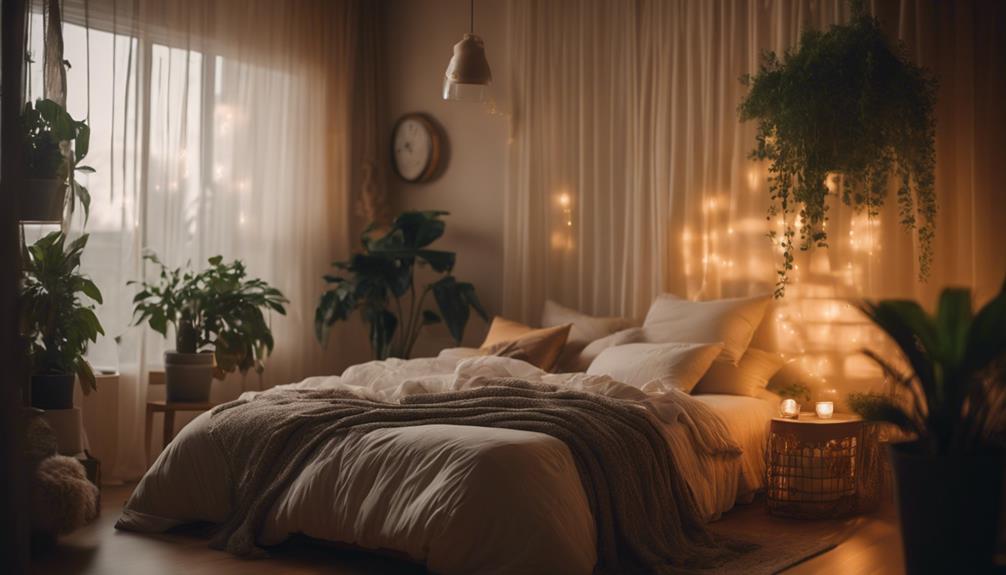
Creating a sense of privacy in your studio can transform it into a more comfortable and inviting space. You can use a variety of room dividers to create the illusion of separate areas. Consider incorporating materials and styles that match your aesthetic. Here are some options:
| Divider Type | Material | Style |
|---|---|---|
| Room Screens | Wood | Modern |
| Curtains | Fabric | Bohemian |
| Bookshelves | Open Shelving | Functional |
| Tapestries | Textile | Artistic |
These privacy solutions not only enhance your comfort but also add character to your studio. By investing in the right dividers, you'll make your living space feel more like home while maintaining an inviting atmosphere.
Inspiration Sources
Finding inspiration for your studio's design can elevate your space even further beyond just privacy solutions.
Tap into the vast resources available online, where platforms like Pinterest and Instagram are filled with innovative ideas.
Search for videos and articles from realtors and interior designers, focusing on studio apartments.
Use hashtags like #StudioApartment to connect with a community that shares your passion for efficient living.
Don't forget to explore local design blogs or websites, as they often showcase unique styles that can resonate with you.
Viewing successful designs not only sparks creativity but also boosts your confidence in what your studio can become.
Expert Assistance
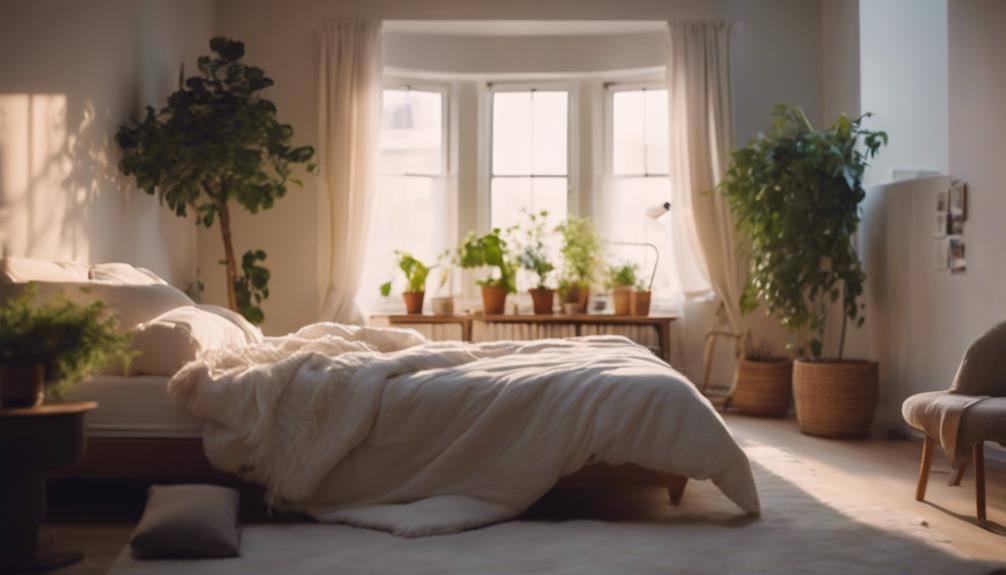
Getting expert assistance can markedly enhance your studio's design, ensuring you select furniture that fits perfectly in your space.
Professionals understand the unique challenges of studio living, helping you choose appropriately sized pieces to maximize functionality.
Consider consulting with designers or using services like CORT, which specializes in furniture tailored for small areas. They can curate personalized furniture packages that reflect your style while optimizing layout.
Additionally, renting furniture offers flexibility as your design needs evolve.
With expert guidance, you can create a cohesive and inviting atmosphere that makes your studio feel like home.
Don't hesitate to reach out for support—designing a cozy bedroom is easier with the right team by your side.
How Can I Create a Cozy Bedroom With Cluttercore Charm in My Studio?
Transform your bedroom charm by incorporating the cluttercore aesthetic into your studio. Layer cozy textiles, mix vintage and modern decor, and display sentimental knick-knacks. Embrace the organized chaos to create a warm and inviting space that reflects your personality. Experiment with different elements until you achieve the perfect cluttercore bedroom vibe.
How Can Rugs Help Create a Cozy Bedroom in a Studio Apartment?
Rugs are the key to creating a cozy bedroom in a studio apartment. By carefully selecting and arranging master perfect space rugs, you can define different areas within the room, add texture and warmth, and make the space feel more comfortable and inviting. Choose rugs that complement your bedroom decor to complete the cozy ambiance.
Conclusion
By thoughtfully optimizing your studio space, you can create a cozy bedroom that feels both functional and inviting.
Did you know that 70% of small-space dwellers report feeling more at ease when their living areas are well-defined? This shows how essential it's to carve out distinct zones in your apartment.
With smart placement and creative solutions, you can transform your studio into a personal retreat that reflects your unique style and enhances your daily life.
